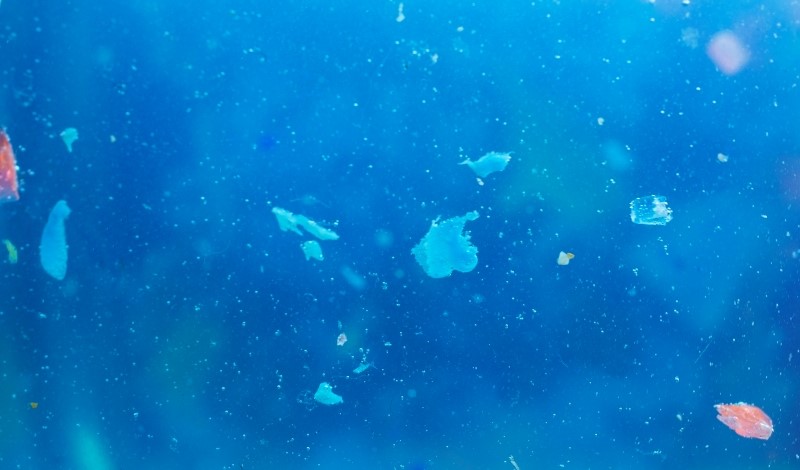
Scholar argues that federal regulatory interventions are needed to reduce plastic wastes.
The amount of plastic produced in the last ten years is equivalent to all the plastic produced since its invention. And some plastic wastes end up ultimately in the human body. According to one study, each week people ingest about a credit card sized amount of plastic.
Although plastic pollution has gained public attention in recent years, there remains a dearth of regulatory interventions that are impactful in curbing its health impacts. The federal government should confront the hazards plastic production poses to public health and the environment, according to a recent article by Rachael E. Salcido, law professor at McGeorge School of Law.
Salcido argues that the Clean Water Act provides much-needed regulatory tools to address plastic pollution. The Clean Water Act encourages “cooperative federalism” between states and the federal government to protect water quality. Salcido argues that there are several ways this law provides regulatory tools to mitigate plastic pollution.
The Clean Water Act grants broad authority to the federal government to set water quality standards, issue or deny permits for polluters, require reporting mechanisms of pollution, and to encourage states to strengthen regulatory oversight.
The U.S. Environmental Protection Agency (EPA), for example, could set water quality standards for acceptable levels of plastic chemicals in the water. But so far EPA has declined to do so, despite requests from environmental groups and a government audit.
Salcido describes reporting mechanism for states as another tool for pollution mitigation. Here, states must report a list of any water within the state that falls below EPA’s set standards to the agency for approval. One environmental group, the Center for Biological Diversity (CBD), sued EPA for approving Hawaii’s “impaired waters” list in 2020.
CBD’s lawsuit argued that Hawaii and EPA failed to abide by the Clean Water Act because
EPA approved the list despite it not including seventeen water sites that contained significant plastic pollution. CBD alleged that water containing plastic pollution should be included as “impaired waters” under the Act. EPA later added two of these sites to the impaired waters list. Salcido argues that CBD’s lawsuit demonstrates how the state’s water reporting tool could and should hold states more accountable for plastic pollution.
Reducing existing pollution, however, is less effective than targeting future discharges for reducing overall plastic pollution, Salcido notes.
Salcido cautions that existing regulations for plastic production facilities are outdated and lack strong requirements. This motivated a 2019 petition from 280 organizations to EPA urging the agency to update its 26-year-old regulations for all plastic producers to prohibit pollution and increase oversight. Salcido praises the inclusivity of the petition and emphasizes the primary message that limiting all discharges of plastic pollution during production is one of the few ways to mitigate plastic pollution effectively.
Fossil fuel companies promote recycling efforts to shift the focus of plastic pollution mitigation toward pre-existing pollution, rather than limiting production. Salcido clarifies that recycling is not a solution to plastic pollution because it is not feasible to keep up with production. Plastic production, Salcido explains, is also projected to increase substantially and fossil fuel companies exert significant effort to minimize regulatory oversight.
Increasing plastic production also leads to the creation of new production facilities. These facilities increase pollution in surrounding areas and disproportionately impact low-income and minority communities. A proposed permit for a Farmosa plastic production facility in Louisiana, for example, spurred a legal challenge for not evaluating the pollution effects on the local community. Although the lawsuit was dismissed, Salcido notes it provoked national press and increased public awareness of plastic pollution.
Production facilities also create other regulatory challenges, Salcido describes. Plastic production uses thousands of “nurdles”—a microplastic pellet to create larger plastics. Nurdles are released into local water supplies near plastic production facilities both intentionally and unintentionally. Because of their size, Salcido explains, nurdles can be difficult to detect and to attach liability. A private lawsuit in Texas under the Clean Water Act against Farmosa for emitting nurdles into the San Antonio Bay alleged Farmosa violated its state-issued permit under the Clean Water Act and led to a settlement between the parties.
The Texas lawsuit became complicated, however, when nurdles were found in an area away from Farmosa’s facility. The U.S. Court of Appeals for the Fifth Circuit held that Farmosa was not liable for “new discharges” of plastics in part from the difficulty of connecting the nurdles with the Farmosa production facility. The initial successful settlement, Salcido contends, demonstrates the power of the Clean Water Act to regulate plastic pollution by attaching liability. Salcido further notes that specified standards and settlement terms specifically for nurdles can mitigate their unique pollution challenges.
These regulatory tools, Salcido emphasizes, can and should be used to specifically mitigate plastic pollution from production to cleaning up the increasing quantity of existing plastic pollution. The “plastic activism” of private citizens and environmental groups, Salcido concludes, has emphasized the need and the potential of federal regulatory intervention to address plastic pollution using the Clean Water Act.



